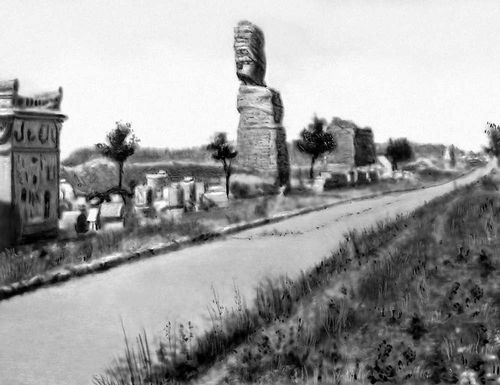ترجمة وتحليل الكلمات عن طريق الذكاء الاصطناعي ChatGPT
في هذه الصفحة يمكنك الحصول على تحليل مفصل لكلمة أو عبارة باستخدام أفضل تقنيات الذكاء الاصطناعي المتوفرة اليوم:
- كيف يتم استخدام الكلمة في اللغة
- تردد الكلمة
- ما إذا كانت الكلمة تستخدم في كثير من الأحيان في اللغة المنطوقة أو المكتوبة
- خيارات الترجمة إلى الروسية أو الإسبانية، على التوالي
- أمثلة على استخدام الكلمة (عدة عبارات مع الترجمة)
- أصل الكلمة
diamond-shaped via pads - ترجمة إلى الروسية
общая лексика
ромбовидные площадки межслойных переходов
общая лексика
глухое переходное отверстие
в САПР электроники - несквозное переходное отверстие, которое достигает только одного внешнего слоя печатной платы
Смотрите также
تعريف

ويكيبيديا

Shaped canvases are paintings that depart from the normal flat, rectangular configuration. Canvases may be shaped by altering their outline, while retaining their flatness. An ancient, traditional example is the tondo, a painting on a round panel or canvas: Raphael, as well as some other Renaissance painters, sometimes chose this format for madonna paintings. Alternatively, canvases may be altered by losing their flatness and assuming a three-dimensional surface. Or, they can do both. That is, they can assume shapes other than rectangles, and also have surface features that are three-dimensional. Arguably, changing the surface configuration of the painting transforms it into a sculpture. But shaped canvases are generally considered paintings.
Apart from any aesthetic considerations, there are technical matters, having to do with the very nature of canvas as a material, that tend to support the flat rectangle as the norm for paintings on canvas.
In the literature of art history and criticism, the term shaped canvas is particularly associated with certain works created mostly in New York after about 1960, during a period when a great variety and quantity of such works were produced. According to the commentary at a Rutgers University exhibition site, "... the first significant art historical attention paid to shaped canvases occurred in the 1960s...."

![[[Richard Tuttle]], ''Red Canvas,'' 1967, [[National Gallery of Art]] ([[Washington, D.C.]], USA) [[Richard Tuttle]], ''Red Canvas,'' 1967, [[National Gallery of Art]] ([[Washington, D.C.]], USA)](https://commons.wikimedia.org/wiki/Special:FilePath/'Red Canvas' by Richard Tuttle, 1967, Corcoran Gallery of Art.jpg?width=200)

